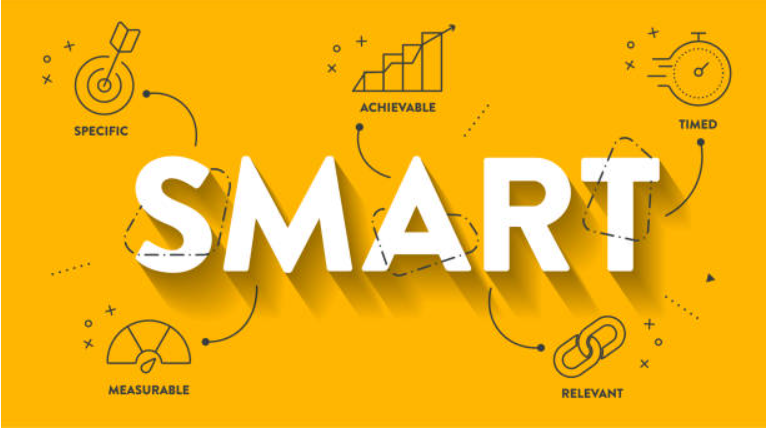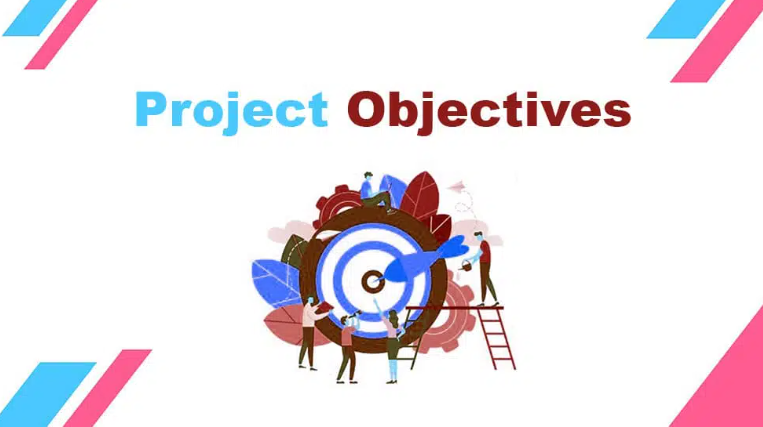Effective project objectives are important for successful project management. They act as the roadmap for achieving the project goals. Objectives should always be SMART, which means-
- Specific
- Measurable
- Achievable
- Relevant
- Time-bound.
This approach ensures that objectives can serve as key performance indicators. As a result, it reflects the project’s progress throughout the project lifecycle.
To create successful objectives, it’s important to clearly identify the project milestones and set realistic project deadlines. This integration of task management, and workflow management will optimize the performance of the project team.
Introduction to project objectives
The main objective of this project is to improve project management practices across all departments. With a focus on task management and resource management, the project aims to streamline workflow management. This effectively organizes project tasks and project resources.
The overall project goals are guided by key performance indicators and measurable objectives. They adhere to the project lifecycle while striving to reach “SMART” objectives and project milestones.
Furthermore, the project seeks to improve coordination and communication within the project team. This drives efficiency and productivity towards the overall project objectives.
Definition of project objectives
Our project is centered on good project management and task management. It is centered on resource management too. We have several aims for the project lifecycle.

We want to set SMART objectives. These will guide project tasks to help reach project goals. We want to manage workflows efficiently. We’ll do this by focusing on objectives that can be measured and key performance indicators. We aim to meet project deadlines.
The importance of clear project objectives
The core of effective project management revolves around setting clear project objectives at the outset. As expected, these objectives provide the roadmap for task management and resource management. Also, it ultimately drives the project towards success. It is noteworthy that they represent key performance indicators that are significant in the entire project lifecycle.
Clear project objectives are important for successful project management. These objectives set project milestones, guide the allocation of project resources, etc.
Key elements of effective project objectives
Effective project objectives are essential in project management. These objectives usually focus on three key elements:
- Project tasks
- Measurable objectives
- Project resources
Project tasks are the backbone of task management. And it should be clearly defined to ensure smooth workflow management. Plus, measurable objectives are important for project success.
Project resources are a critical element in resource management. It is important to note that it can include finances and personnel resources. And the great thing is that allocating these resources can greatly impact the achievement of project goals.
Specificity in project objectives
Good project management is about setting clear goals. These goals guide the team throughout the project. Clear goals help manage tasks and lead to success. These goals involve-
- Defining tasks
- Setting deadlines
- Listing needed resources
Key performance indicators (KPIs) are important in measuring success. By monitoring these KPIs, a clear system for managing work emerges.
Measurability of project objectives
Project management is about setting measurable goals. These goals make task management efficient and help adjust resources as needed.
Several KPIs are linked to these objectives. They track things like key points in the project, workflow management, etc. And the amazing thing is that by managing resources effectively, the team can align all tasks with the desired outcomes!

Measuring project objectives is key to achieving project goals. It provides a clear view of the project’s path at any point in its lifecycle.
Achievability of project objectives
Implementing project management, and resource management, is key for a project to run smoothly. This ensures that project goals align with SMART objectives. In addition, this alignment helps identify KPIs throughout the project.
Also, allocating resources strategically, and finding tasks, in the project enhances workflow management. Setting deadlines and having a well-coordinated team are vital for success.
Relevance of project objectives
Project objectives are key in managing workflows. An interesting thing about them is that they define the project goals and guide the team. They help manage tasks by setting KPIs and measurable objectives. These objectives also play a big role in managing resources.
Using SMART objectives in project management can make things work better. These objectives make sure that the tasks of the project-
- Are clear
- Can be measured
- Can be achieved
- Are relevant
- Have a time limit
Time-bound nature of project objectives
In managing a project, objectives that have a time limit are crucial for managing tasks. It’s important to make sure each task in the project has a deadline.

During the life of the project, each key point and deadline are set. This gives the project team clear goals for the project. This is an important part of managing the workflow. And another great thing is that it helps make things more efficient and productive.
Managing objectives that have a time limit also affects how resources are managed. It involves using project resources effectively to make sure objectives that can be measured are met within the time limits set. A surprising fact about KPIs is that they can be used to find out if the project is successful.
Steps to writing effective project objectives
To write good project objectives, you need to understand the project’s main purpose. This understanding comes from a careful study of the project’s life cycle, resources, and workflow management. The objectives should be SMART - Specific, Measurable, Achievable, Relevant, and Time-bound. These serve as the project’s key performance indicators.
Setting clear project milestones can help the project team stay on track. The important thing to note is that it helps set clear deadlines for the project. This effort supports both project and task management.
Using good resource management strategies can help a project manager use both human and material resources efficiently. Therefore, it is not surprising that clear and strategic project objectives are the foundation of successful project management.
Identifying the project's purpose
The main purpose of the project includes-
- Efficient project management
- Resource management
- Task management
These key parts work together to make the project lifecycle smooth from start to finish. This ensures the project is successful.
By following workflow management strategies, the team can achieve project milestones systematically within the set project deadlines. Using project resources and tasks accurately ensures they are used to their full potential.
Setting the scope of the project
This project will use project management, task management, and resource management principles. At the same time, it will set SMART objectives, and use project resources effectively to meet targets.

Workflow management will be key in coordinating project tasks, tracking project deadlines, etc. The project team will regularly review key performance indicators during the project to align with measurable objectives.
Defining the deliverables
The project management plan will outline the project’s objectives, resources, and tasks. It will follow a set project lifecycle; thus making sure all project milestones are clear. The plan will use key performance indicators to measure the project’s success against measurable objectives.
Task management is important to make sure project tasks are done within deadlines. The project team will use a workflow management system to assign and track tasks effectively. This will allow for efficient resource management. And the cool thing is that it will make sure project resources are used well!
Setting the timeline
Effective project management is key to setting a clear timeline for any project. By setting project deadlines, it provides a roadmap for the project team to follow from the start of the project to its end. This involves the following 3 things-
- Task management
- Ensuring key performance indicators are met
- Reaching project milestones
Resource management is also considered in analyzing the use and allocation of project resources like time, people, and budget.
Common mistakes in writing project objectives
A common mistake when setting project objectives is not using SMART objectives. And it’s a fact that Without a SMART objective, it’s hard to track project success and key performance indicators. As a consequence, this often leads to unclear and immeasurable objectives that don’t guide the project team well.
Another mistake is not considering the stages of the project lifecycle when setting objectives. This means not defining project tasks, deadlines, or resources for each stage properly.
Projects often fail because project goals don’t align with the overall strategic direction of the organization. This misalignment can lead to wasted resources and failure to meet expectations. And it is a sad thing that it can negatively affect the project management process.
Vague objectives
The team focuses on managing resources and workflows throughout the project. It aligns the team and their tasks while using resources efficiently. A smooth workflow is key to achieving project goals.
Pro Tip: Measurable objectives are important in tracking the project’s progress and success. These objectives guide the team’s focus and efforts in reaching project milestones.
Unrealistic objectives
It is a sad reality that starting a project with unclear or unrealistic objectives leads to problems in the following spheres-
- Project management
- Workflow management
- Resource management.
Goals that can’t be measured or are too big only cause confusion and miscommunication in the team. These block the setting of SMART objectives or key performance indicators.
Bonus Tip: Understanding the project lifecycle and setting project tasks properly is key. Without this, project milestones seem unreachable and deadlines get missed.
Ignoring stakeholder's expectations
In project management, it’s important to align the project’s goals with what stakeholders expect because misunderstanding or ignoring stakeholders can hurt key performance indicators and risk project success.
Stakeholders can also help set measurable SMART objectives and realistic project milestones. If their views are ignored, it can lead to poor use of project resources.
So, giving stakeholders a say in workflow management promotes openness and ensures project tasks align with what stakeholders expect. This leads to greater stakeholder satisfaction and project success.
Role of project management tools in achieving project objectives
To maximize the chances of achieving your project objectives, it's crucial to invest in technology that can streamline and simplify the process. One such solution is a creative agency project management software, designed with modern agencies in mind. Its robust features allow for smooth project handling and better collaboration among team members.
When considering product management software when achieving your project objectives, make sure it's customizable to your team's needs. This software should help you break down complex project goals into manageable tasks. Ensure it offers comprehensive features, including task assignment, progress tracking, and integrated communication tools.
In order to reach our project objectives, it is necessary to understand the process we follow. This process can best be understood by referring back to our previous process-map article which provides a comprehensive overview. By aligning these two components of project planning and execution, we can assure an efficient workflow.
Achieving project objectives requires effective management of resources, including time. A handy tool for ensuring time-efficient operations is an advertising agency time tracking software, which can significantly improve productivity. It allows you to monitor how time is spent, leading to better project completion rates.
Understanding and outlining your project objectives is vital to the success of your project. One of the effective ways to meet these objectives is by designing an efficient agency marketing plan. Consider investing your time in creating a robust marketing strategy for optimal results.
In planning and organizing your project goals, it's crucial to come up with measurable, achievable, relevant, and time-bound objectives. A good start is by understanding and implementing various project management charts, which provide visual representations of the project scope. These charts will ensure your team stays on course, and each objective aligns with the overall project goal.
Project management tools are important for meeting project goals. They help manage workflows, tasks, and resources. They make the project lifecycle smoother, letting the team track tasks, and resources effectively. These tools help set measurable, SMART objectives and monitor key performance indicators.
Using Asana for project management
Asana is a strong project management tool. It offers a platform that makes task management, workflow management, etc. Plus, this amazing tool lets project teams set project goals, monitor key performance indicators, etc.

The platform supports setting measurable objectives and setting project milestones. It also manages project resources, tasks, and deadlines efficiently.
Utilizing Trello for task management
Trello is a strong tool for managing tasks in any project lifecycle. It lets the project team organize tasks, manage resources, etc. The cool thing about Trello is that its easy-to-use interface lets users track progress toward project goals and ensure project success.
This tool helps set measurable objectives and schedule project deadlines. The visual boards can show key performance indicators and project milestones too.
Implementing Slack for communication
Using Slack for communication greatly improves project management, task management, etc. As a tool, it helps track project tasks, and importantly, the team’s productivity. With many functions like making channels for specific topics, and sharing files, Slack is key to managing project resources.
With Slack, it’s easier to-
- Monitor project milestones
- Discuss key performance indicators
It helps ensure the project lifecycle runs smoothly, contributing greatly to project success.
Conclusion: The impact of well-defined project objectives on project success
When defining your project objectives, ensuring a consistent and predictable income stream should be considered essential, something that can be integrated using methods like recurring revenue models for agencies. It not only aids to financial stability but also projects growth in the long run. Therefore, the success of project objectives can be significantly influenced by focusing on generating recurring revenue.
In defining project objectives, it is important to consider the desired outcome in terms of client interaction with your product or service. Maximizing customer interaction could be aided by efforts from a top tier conversion rate optimisation agency. Adopting such strategies ultimately drives project success.
In conclusion, clear project objectives greatly increase project success. Effective task management, SMART objectives, and good resource management guide the project team toward achieving the project goals within the set deadlines. So, they are essential parts of any project management strategy.
We can finally arrive at the conclusion “Clear objectives are key to managing the project lifecycle well and ensuring good workflow management.”







